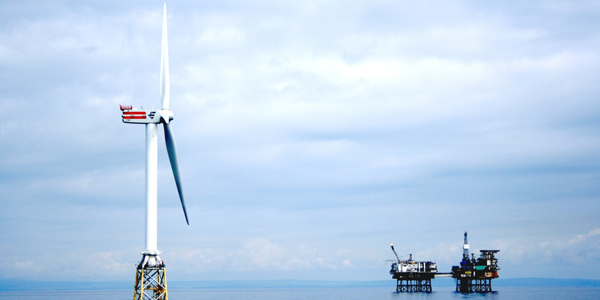FERC denied a complaint filed by Anbaric Development Partners seeking an order for PJM to allow developers of offshore transmission “platforms” the ability to obtain injection rights.
In its decision filed June 18, the commission ruled that Anbaric failed to demonstrate that the PJM Tariff is “unjust and unreasonable” because of the RTO’s refusal to allow three proposed offshore transmission projects to receive transmission injection rights (EL20-10).
Anbaric and other transmission developers argued to PJM that having individual wind farms build separate radial lines to shore will be more expensive, more environmentally intrusive and less resilient than networked open access facilities that multiple wind farms could use.
In its Nov. 18 Anbaric Seeks FERC Help on OSW Tx.)
“PJM’s interconnection analyses require a source and a sink and controllability in order to meet operational requirements, such as measuring congestion and assessing deliverability,” the commission wrote. “Rather than ‘picking winners and losers,’ these requirements enable PJM to ensure that its transmission system operates reliably and efficiently. Any merchant transmission facilities that meet these Tariff requirements may seek interconnection to the PJM system.”
PJM’s Tariff allows merchant transmission developers to obtain transmission injection and withdrawal rights for DC facilities or controllable AC facilities connected to a control area outside the RTO. In early 2019, stakeholders approved a problem statement that considered allowing merchant transmission developers to request injection rights for non-controllable AC transmission offshore, but after six special sessions, members opted to refrain from changes. (See “PJM Recommends Sunsetting Offshore Wind Special Sessions,” PJM PC/TEAC Briefs: Sept. 12, 2019.)
Anbaric — which helped build the 660-MW Neptune HVDC cable linking PJM to Long Island and the 660-MW Hudson project connecting Manhattan to the RTO — filed the FERC complaint after the stakeholder process failed. It is still planning a network of transmission “platforms” that could deliver 52 GW or more of offshore wind generation to PJM, Anbaric Pushes Offshore Grid Plans.)
In March 2018, Anbaric submitted interconnection requests for two proposed AC transmission platform projects seeking 1,100 MW of injection rights, but PJM told the company it would need to partner with a generator to obtain the rights under current Tariff rules.
Then in June 2018, Anbaric submitted an interconnection request for a proposed DC transmission platform project seeking a 1,200-MW injection into Public Service Electric and Gas’ transmission system in North Brunswick, N.J. After completing a feasibility study that assumed the injection, PJM informed Anbaric in November 2019 that it would only model the project without injection rights.
The company argued to FERC that there are no technical reasons for blocking transmission platform projects, citing transmission built to deliver onshore wind from Texas’ Competitive Renewable Energy Zones and California’s Tehachapi Pass. FERC dismissed the argument, saying PJM already has the “State Agreement Approach” in its Regional Transmission Expansion Plan (RTEP) process that can be used for transmission to offshore wind.
The commission last week issued a notice that it will hold a technical conference on Oct. 27 to discuss “whether existing commission transmission, interconnection and merchant transmission facility frameworks in RTOs/ISOs can accommodate anticipated growth in offshore wind generation in an efficient and effective manner that safeguards open access transmission principles and to consider possible changes or improvements to the current framework should they be needed to accommodate such growth.”
Commissioner Bernard McNamee issued a concurring statement in the Anbaric order saying the technical conference will allow FERC to hear from industry experts about the challenges and opportunities of developing offshore wind projects.
“A key element to gaining access to offshore wind is the construction of and access to transmission to bring wind-generated electricity onshore to the grid,” McNamee wrote in his statement. “As discussed in today’s order, there are a number of complicated issues involving open access, financing and jurisdiction that need to be confronted.”




